Buying Rugs In Pakistan
The city of Quetta is a dump. It’s the provincial capital of Baluchistan, the western most province of Pakistan. It sticks out like a nasty looking spike, with Iran to the south and Afghanistan to the north. I was there in the late 1990s waiting for a government permit to head off road and up to the border region with Afghanistan to prospect for copper (see my earlier blog posts here and here) I waited about 3 weeks for the permit, which was finally granted after I hosted 15 or so officials from the ministry for lunch at a Chinese restaurant.
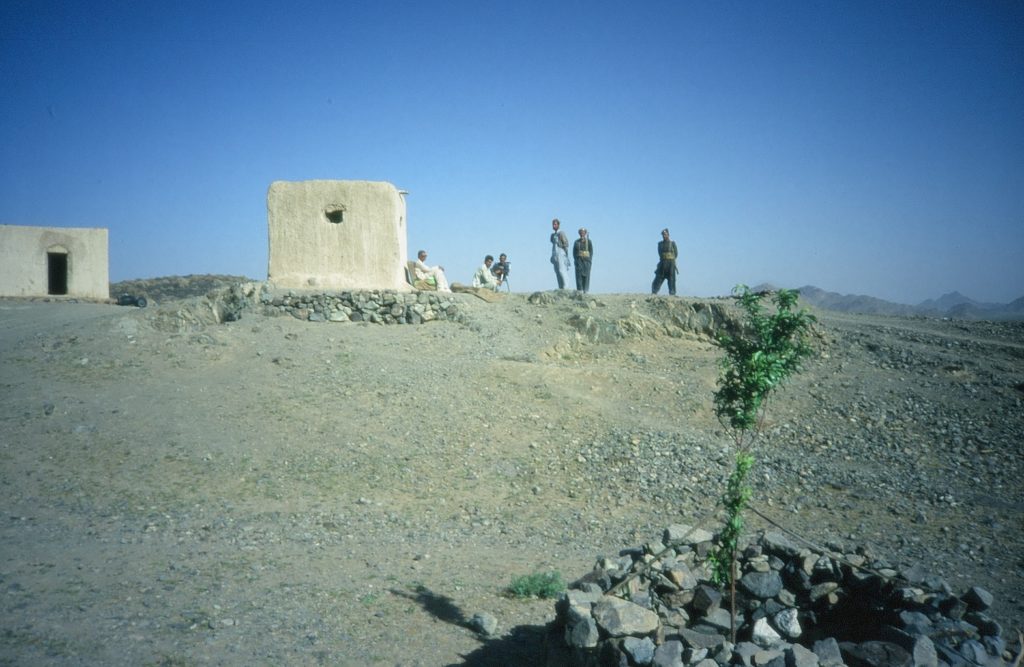
Sometimes I question the wisdom of my choices.
Fast forward to 2019 and now it’s not just a dump, it’s a bloody dangerous dump, rife with Islamic sectarian extremism. The Shia Hazara tribes have been targeted by Sunni militants leading to bombings, kidnappings and other nefarious goings on. To compound its problems, the region is also prone to major earthquakes. The last big one in 1935 killed an estimated 40,000 residents.
Mmmm. Glycerine Free Beer
Naively ignorant of all of this, I happily walked the neighbourhood around my hotel. I went to Quetta’s central market to get passport photos for my permit and had a bad haircut at the local sheep shearer. I drank the local beer (Murree Beer “Guaranteed glycerine free!”) each night, available under prescription from the hotel doctor- a calming draft to help me sleep. I was even asked to guest star as an English language teacher in a local TV soap opera after being accosted in the street outside the studio by the director (I politely declined as they need someone for a few weeks.)
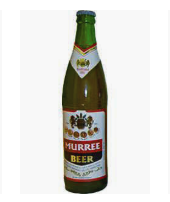
My temporary base was the Quetta Serena Hotel; a green and tan oasis of sanity in the rocky Baluchi desert and, luckily, one of the best managed hotels I’ve ever stayed in. My daily routine was the same. Breakfast. Check in with my local guide and geologist, Naseem, to see if the permit had been granted. Then I’d go for a walk around the ‘hood, take a nap, and end up drinking black, sweet tea with the proprietor of the hotel carpet shop for an hour or two. He’d gamely try to sell me a carpet and I’d decline.
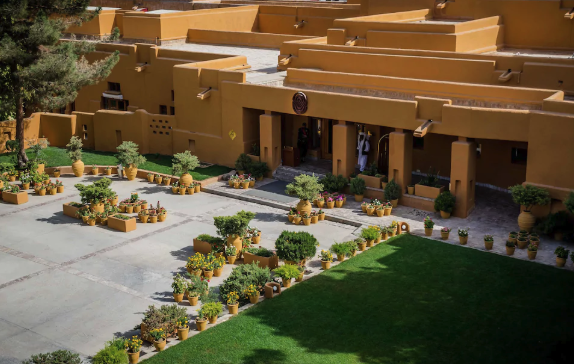
I Love Carpets
I’d already been collecting carpets for 5 or 6 years; first in Turkey, then in the carpet bazaar in Tehran, Iran, which has to be the spiritual home of carpets. I spent as many days in there as I could, immersed in the smell of wool and cotton, with my Iranian friend Shahab translating and haggling for me. I bought silks, kilims, Kurdish rugs and by the late 90s I had a half decent collection.
My taste in carpets had developed to the point where I no longer bought blindly. I’d go into the market with a clear idea of what style I was looking for. I’d once owned a large Sirjan kilim (a kilim is a flatwoven rug; a rug without a knotted pile). I’ve always found Sirjans to be particularly distinctive and beautiful, often using red and blue natural dyes to define a distinctive, deceptively simple striped pattern. When I split up with my partner in mid 1990s the Sirjan -which we’d bought together in Istanbul- went with her, leaving me without and hungry to buy another.
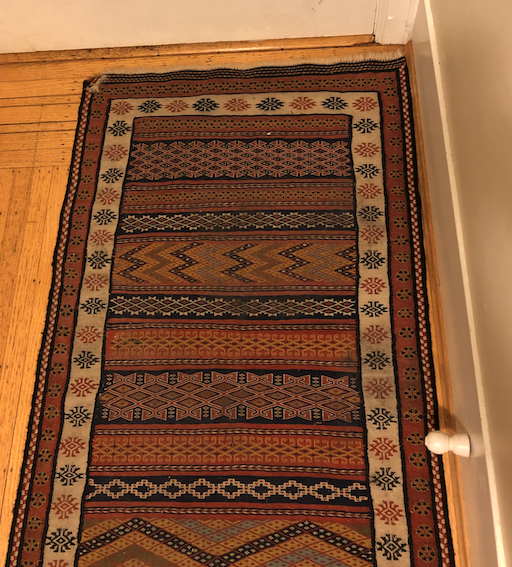
Sirjan Or Bust.
The Quetta Serena carpet shop attracted a steady stream of sellers from Baluchistan and Afghanistan. They’d hobble into the lobby from their rusty old cars, carrying carpets to sell to the owner. He’d pay them in bundles of ragged paper money and add the rugs to the growing pile for cleaning, cataloguing and pricing.
This particular day an old man walked in, almost bent double with a huge kilim rolled up and draped over his shoulder. His skin was heavily wrinkled, saddle-leather brown in colour, and he looked like he’d spent his whole life in the desert (The owner subsequently told me he was from a nomadic Afghan tribe.) When he dropped the kilim on the floor and unrolled it, my heart skipped a beat. It was a stunning wool Sirjan, maybe 8ft by 4ft in size, and exactly what I’d been hunting for for the last 3 or 4 years.
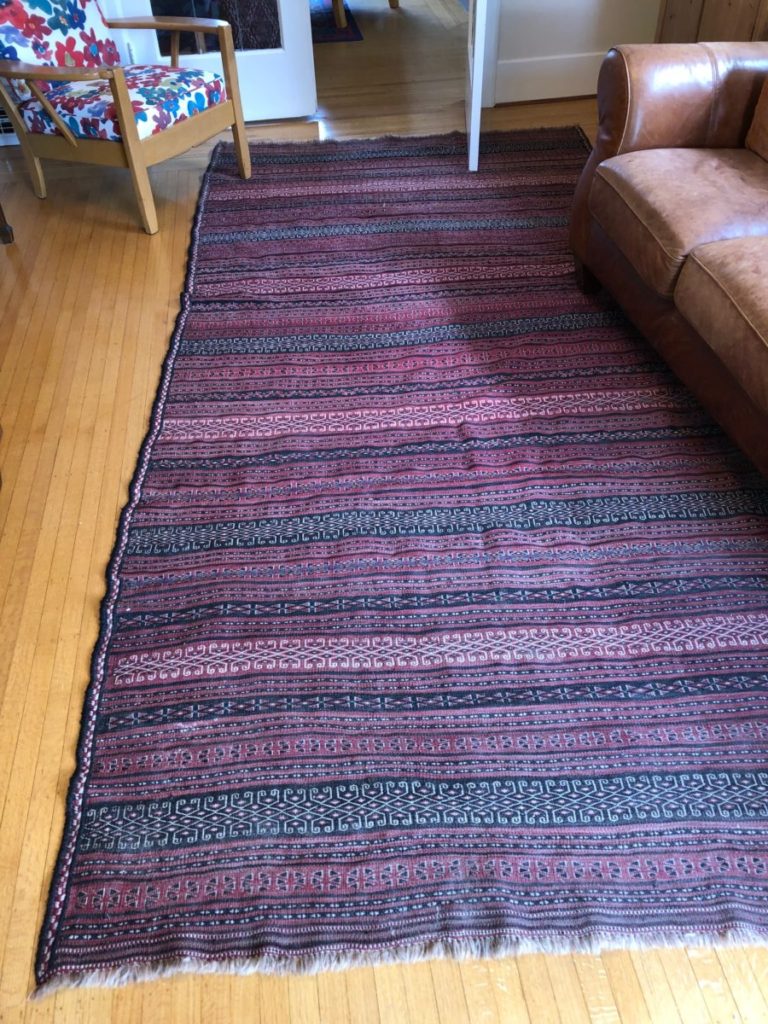
Nope. Not Interested.
The worst thing you can do in carpet shop is show any enthusiasm because that’s when they know they’ve got you, and they’ll have your cash within an hour or two. So, I didn’t say anything, and I waited. Two days passed, then 3. We drank tea and talked about the different styles of rug, the tribes that make them, the dyes used, and I studiously avoided mentioning the Sirjan. Then, on the third day, it came up as part of my education about the different tribal styles. He told his shop boy to grab the rug and they unrolled it for me, explaining the meaning of the highly stylized motifs woven into it.
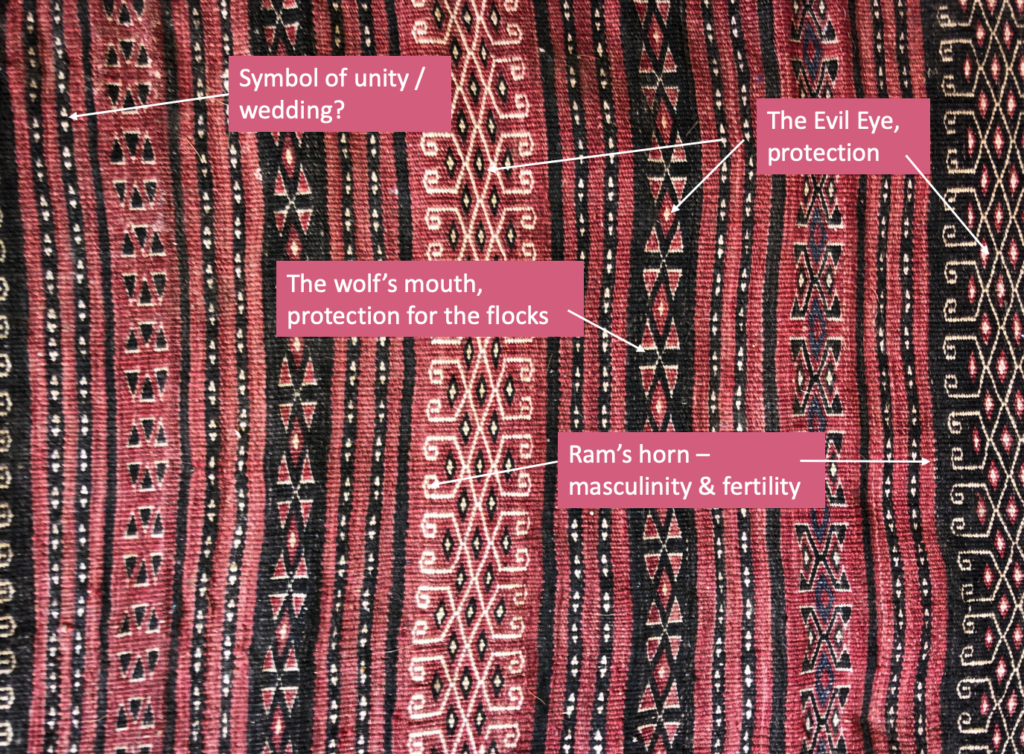
Ok, Ok, So How Much?
I asked him to tell me the relative prices of the different styles. Which were the most expensive? Was it simply based on size, design or dye quality? Are older carpets more valuable? He told me the Sirjan was an expensive piece and was surprisingly coy about the price until I asked him for the fifth time.
“This kilim, very very expensive. I pay a lot for it.”
“So, what would you sell it for?”
“Two.”
Two what, I thought? Thousand? US? Ouch.
“Two hundred US dollar.”
The voice in my head said “Fuck me. That’s not possible.”
Oh, Go On Then.
If you’ve ever haggled in a carpet shop, you know that their first price is simply an opening gambit to see how serious a buyer you are. They expect you to bargain and play the game. If you take their opening price, no matter how good it is, you’re a greenhorn, ripe for a rip off, and they’ll lose respect for you immediately. They’ll mutter to each other and laugh at you. Word of the dumb foreigner with easy cash will spread through the market very quickly and you’ll become a mark for every salesman.
So, I haggled for a day, finally beating him down to US$140, paid in crisp, new dollar bills. God only knows what he paid the Afghani for it, but I’m guessing it was $20-30 at the most. It still amazes me to think how far that man had come to sell such a well-crafted rug for so little money. The shop owner made a profit equivalent to about a month’s wage for local labourers.
Take Me Home.
The carpet was rolled up and I carried it back to Budapest, my home base, in a large hockey kit bag. A few weeks later and it would’ve been shipped to Europe on consignment to a dealer in Germany or London, to be sold for a huge mark up. It was accompanied in the bag by a couple of itinerant, hitch-hiking cockroaches that promptly fled into my apartment when I unpacked the rug and had to be hunted down. A small price to pay.
Don’t Forget
Don’t forget, carpets are not just for Christmas. They need to be nurtured and loved. Hopefully this piece has inspired you to go and blow some serious dough on a Sirjan rug. If not, you could still derive some small happiness by subscribing to urbancrows.com via the miserable subscription box that I carelessly placed near the top of the page. I’ll be sure to email you more travel-related dullness from time to time, and I’ll even take requests for articles. Weddings, parties, anything. No, really.


Kilim me softly… what a gorgeous rug! LOVE the bargaining process as you described it. Well done (the story AND the bargaining)!
Great post, Ralph. Now I want a carpet.
you can’t have mine. buy yer own.